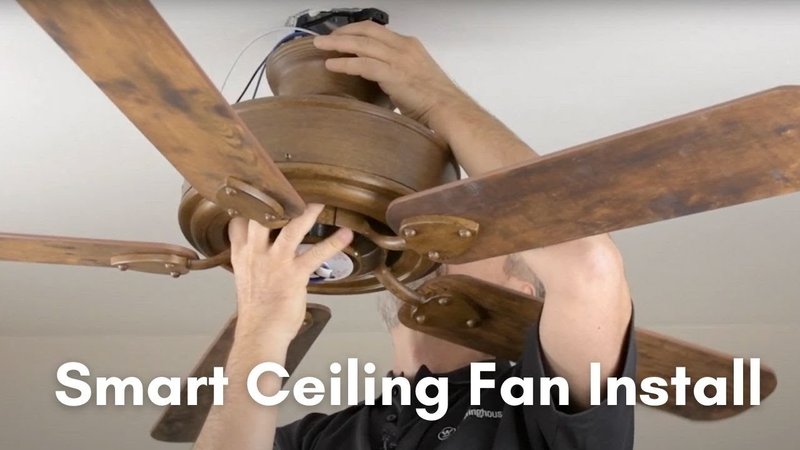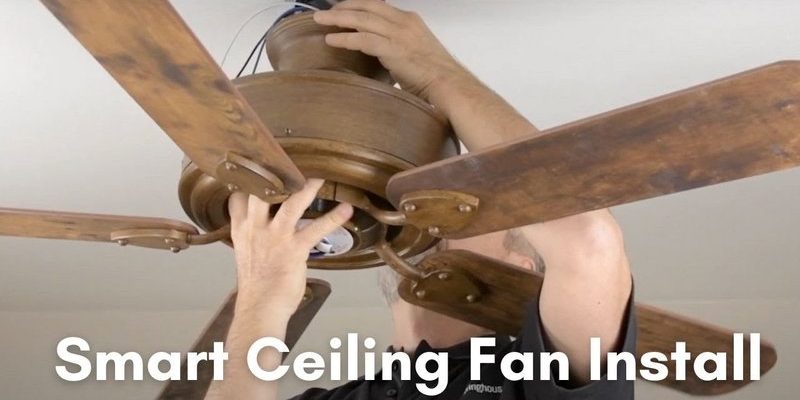
Westinghouse is one of those brands you see everywhere in the ceiling fan aisle. Their fan remotes are pretty simple, with buttons for speed, light, reverse, and maybe a few fancy extras. But when your fan is installed on a twelve-foot or higher ceiling, does that remote still do its job? Or do you need to squint, aim, and hope for the best every time you press the button?
Here’s the thing: getting a remote to work across a room is one thing, but getting it to work with a fan that’s practically hanging from the clouds is a little more complicated. Let’s look at what’s really going on when you try to use a Westinghouse ceiling fan remote on high ceilings, what the range actually means, and how to make your setup easier (and less frustrating).
How Westinghouse Ceiling Fan Remotes Work
Picture this: your Westinghouse ceiling fan remote is basically a tiny radio station, beaming silent signals through your living room. When you hit a button—let’s say you want the fan to speed up—the remote sends a coded radio frequency (RF) signal. The receiver hooked up to your fan listens for that signal, decodes it, and tells the fan what to do.
Most Westinghouse fan remotes use RF, not infrared (IR) like a TV remote. That’s important. With IR, you’d need to point the remote almost directly at a sensor (and have a clear line of sight). RF, on the other hand, can go through walls, ceilings, furniture, and—lucky for us—upward airspace. That’s why you don’t have to stand beneath the fan and aim.
The main components involved are:
- The handheld remote: Looks like a small TV remote and contains the transmitter and battery.
- The receiver module: Sits above your ceiling fan blades, wired to both the fan and the power source. This is what “listens” for your instructions.
The range between the remote and receiver is usually around 30 to 50 feet. But just because the signal can travel that far doesn’t always mean it works perfectly on every ceiling height, especially if there are obstacles.
Do Remote Controls Work Well on High Ceilings?
Here’s where most people get nervous. If your ceiling fan is up on a high, vaulted ceiling, it feels like the remote signal might just… fizzle out on the way. But honestly, in most homes, RF remotes handle the distance just fine. As long as you’re within the listed range (usually up to 50 feet), it shouldn’t matter whether the fan is hanging from an 8-foot or an 18-foot ceiling.
The bigger problem is not distance, but interference and obstacles. Think about what’s between you and the receiver—thick beams, metal ducts, or even a swarm of wireless gadgets. These things can absorb or scatter the signal, causing the fan to ignore your remote.
Sometimes, tall ceilings mean you’re standing at a weird angle, aiming up at a fan you can barely see. Don’t stress: with RF, you don’t need to aim, but you do need a clear enough path for the radio signal to reach the receiver. If you’re getting spotty response, try moving around the room. It’s a bit like chasing Wi-Fi bars—sometimes the sweet spot is just a few steps to the left.
Pairing and Syncing Your Westinghouse Remote with High Ceiling Fans
You might be wondering—do you need a special code or pairing trick if your fan is extra high? Not really, but you do need to make sure the remote and receiver are properly synced. This is usually a one-time thing when you first install the fan or if you ever replace the remote or receiver.
Here’s a typical setup process, step by step:
- Install the receiver module above the fan, connecting all wires per the Westinghouse instructions.
- Pop batteries into your handheld remote.
- Set matching dip-switch codes (little switches inside the battery compartment and receiver) if your model uses them. This keeps your fan from responding to the neighbor’s remote!
- Restore power and press the “learn” or “pair” button, if your unit has one. Some just sync automatically.
Up high or not, this process doesn’t change. If you skip the coding step—or accidentally set two remotes to the same code—you might end up controlling both your living room and bedroom fans at the same time. Not ideal, unless you’re conducting a home wind symphony.
If the fan doesn’t respond, don’t panic. Double-check the dip switches, make sure batteries are fresh, and ensure nothing is blocking the receiver. Sometimes high ceilings mean the receiver gets tucked even deeper into the fan canopy, so a good connection matters.
Troubleshooting: When the Remote Doesn’t Work on High Ceilings
The good news? Ceiling height rarely causes true “out of range” issues. But other things do go wrong, especially with a Westinghouse ceiling fan remote. If your fan stops listening—or only works from certain spots—try this checklist:
- Battery issues: Old or weak batteries reduce signal strength. Swap them out even if the light on the remote still glows.
- Interference: Other wireless devices, metal pipes, or thick walls can confuse or block the RF signal. Try turning off nearby electronics or moving around.
- Receiver placement: If the receiver is wedged in tightly above the fan (happens a lot on high ceilings), it might not catch the signal well. Sometimes repositioning helps, but that means getting up there safely.
- Code or sync problems: Double-check the dip switches or pairing procedure. If the code doesn’t match, the receiver ignores you completely.
- Physical obstructions: Decorative ceiling beams, metal downrods, or junction boxes can sometimes scatter or weaken signals, especially with extra-high installations.
If none of this works, you might have a remote or receiver that’s failing. Replacement kits are available, but make sure to get the right model for your fan.
For really high ceilings, some folks install remote receiver extenders or relocate the receiver lower on the downrod. It’s not essential, but it’s a clever hack if you’ve got persistent signal troubles.
Comparing Universal Remotes vs. Westinghouse-Specific Remotes
You’ve probably seen “universal” ceiling fan remotes at the store and wondered if one could solve your high ceiling woes. They do work—for some fans. But there are trade-offs.
Westinghouse-brand remotes are made to pair perfectly with Westinghouse receivers. Universal remotes often require more setup and may not have every feature (like reverse mode or dimmable lights). And the pairing code or sync steps can be fussier, especially if your fan is way up there and you can’t easily reach the receiver for resets.
A Westinghouse remote is usually plug-and-play: match the code, pop in the battery, and you’re done. With a universal model, you might:
- Need to repeatedly try pairing or set multiple codes.
- Lose special functions specific to your fan (like breeze mode).
- Encounter range limits if the universal remote uses a weaker signal.
So, for high ceilings, stick with the original remote if you can. If your remote’s lost or broken, replacing it with the same model keeps things smooth. Only reach for a universal remote if you can’t get a branded replacement.
Resetting and Replacing a Westinghouse Ceiling Fan Remote
Sometimes, nothing but a reset will do. Maybe your remote’s been dropped, or the receiver’s acting haunted. Here’s how you reset and resync most Westinghouse ceiling fan remotes—even if your fan’s way up high.
To reset:
- Turn off the wall power to your fan (flip the breaker, don’t just use the wall switch).
- Wait about 30 seconds, then turn the power back on.
- Within 60 seconds, press and hold the pairing or “learn” button on your remote. Some models flash a light or beep to confirm.
- If you set dip switches, check those first—they must match exactly between remote and receiver.
If you’re replacing a remote, just repeat the initial pairing steps. If your receiver has died (it happens), you might need to get up on a ladder. Safety tip: always turn off power at the breaker before opening up the fan.
For high ceilings, this is honestly the biggest annoyance. If you don’t feel safe climbing, it may be worth a call to a handyman or electrician. No remote is worth a broken bone!
How to Improve Remote Range for High Ceiling Fans
If you’re still struggling with the remote for your Westinghouse ceiling fan, especially on a high ceiling, there are a few tricks to eke out better performance.
- Fresh batteries keep the remote’s signal strong. Don’t wait for the battery to die before replacing it.
- Make sure the receiver isn’t buried under insulation or metal parts above the fan canopy.
- Reorient yourself in the room. Sometimes, standing on the opposite side helps if something is blocking the signal path.
- If interference is an issue, try unplugging or moving Wi-Fi routers, cordless phones, or other devices that use the 300-400 MHz RF frequency range.
One more tip: avoid using two ceiling fan remotes with the same code in neighboring rooms, especially with high ceilings and open plans. Signals can cross, causing both fans to react.
For super-high ceilings in tall entryways or great rooms, consider wall-mounted remotes or smart fan controllers. These give you a backup, and you won’t have to search the couch cushions each time you want a breeze.
Why Reliable Remote Control Matters on High Ceilings
Controlling a ceiling fan on a high ceiling isn’t about laziness—it’s about practicality. Nobody wants to fetch a ladder every time the weather changes. If your Westinghouse remote stops working or loses sync, you’re stuck with a fan speed until you can reach the controls again.
A working remote means:
- You can adjust speed, direction, or light settings without breaking your neck or hiring someone.
- You respond faster to temperature changes—no need to leave the fan running all night.
- You keep your home safer, since you’re not climbing ladders unnecessarily.
Remote issues tend to show up most on high ceilings, simply because you can’t troubleshoot as easily. That’s why proper pairing, fresh batteries, and clear signal paths matter even more.
Closing Thoughts: High Ceilings, High Hopes for Your Westinghouse Remote
Having a ceiling fan way up high can make any room feel dramatic and open—but it also makes the little things, like changing fan speed, feel complicated. The good news is, your Westinghouse ceiling fan remote is designed for these challenges. If it’s set up right and working as intended, you absolutely can use a Westinghouse ceiling fan remote on high ceilings. The signals are strong enough, the pairing is straightforward, and most troubleshooting is the same as with lower ceilings.
If you run into hiccups with range or reliability, focus on battery health, interference, and proper pairing. Don’t let a stubborn remote get in the way of a cool breeze. A little patience (and maybe a one-time ladder climb) pays off with comfort you control from the couch, no matter how lofty your ceiling.
